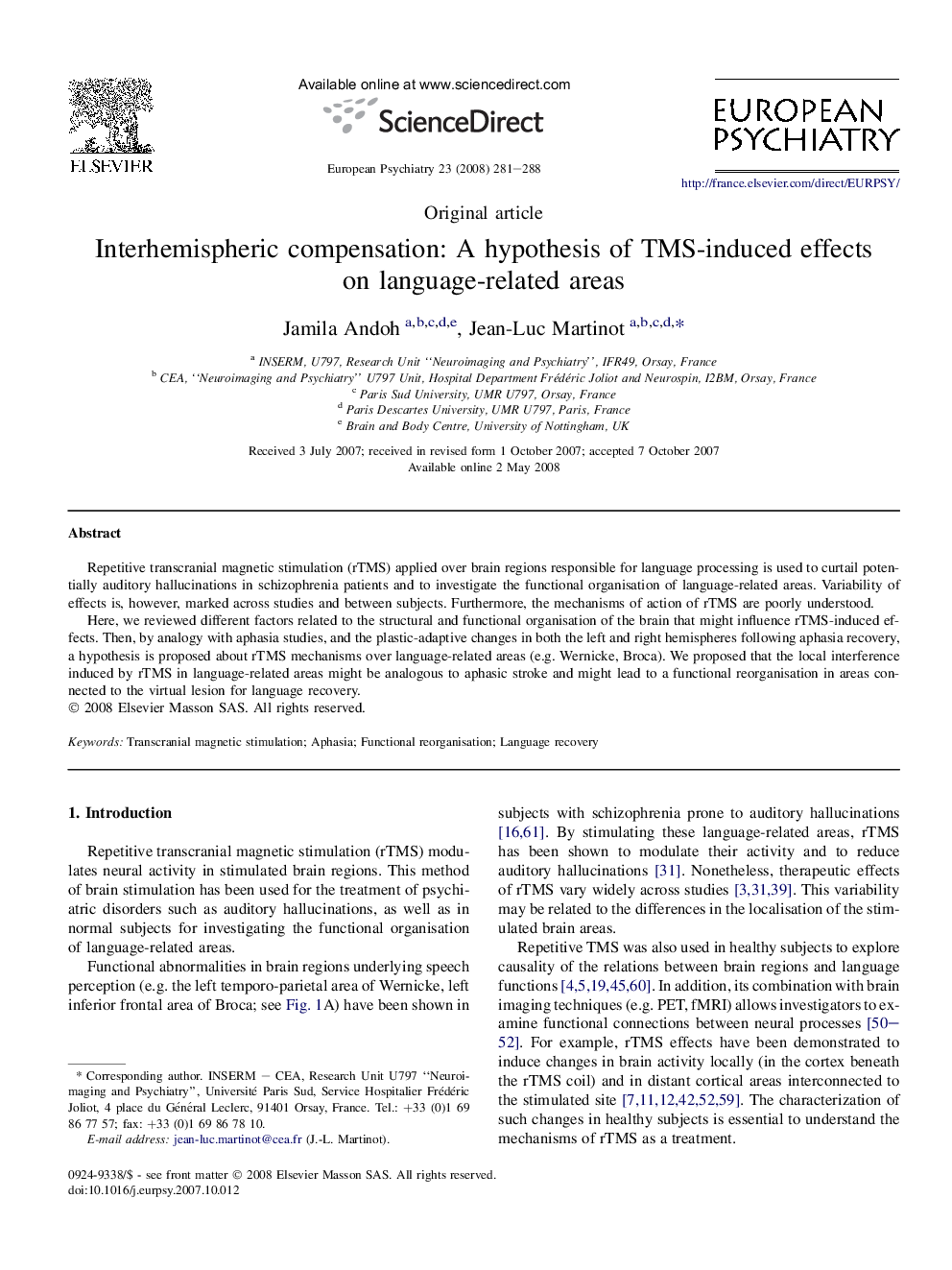| Article ID | Journal | Published Year | Pages | File Type |
|---|---|---|---|---|
| 4185151 | European Psychiatry | 2008 | 8 Pages |
Repetitive transcranial magnetic stimulation (rTMS) applied over brain regions responsible for language processing is used to curtail potentially auditory hallucinations in schizophrenia patients and to investigate the functional organisation of language-related areas. Variability of effects is, however, marked across studies and between subjects. Furthermore, the mechanisms of action of rTMS are poorly understood.Here, we reviewed different factors related to the structural and functional organisation of the brain that might influence rTMS-induced effects. Then, by analogy with aphasia studies, and the plastic-adaptive changes in both the left and right hemispheres following aphasia recovery, a hypothesis is proposed about rTMS mechanisms over language-related areas (e.g. Wernicke, Broca). We proposed that the local interference induced by rTMS in language-related areas might be analogous to aphasic stroke and might lead to a functional reorganisation in areas connected to the virtual lesion for language recovery.
